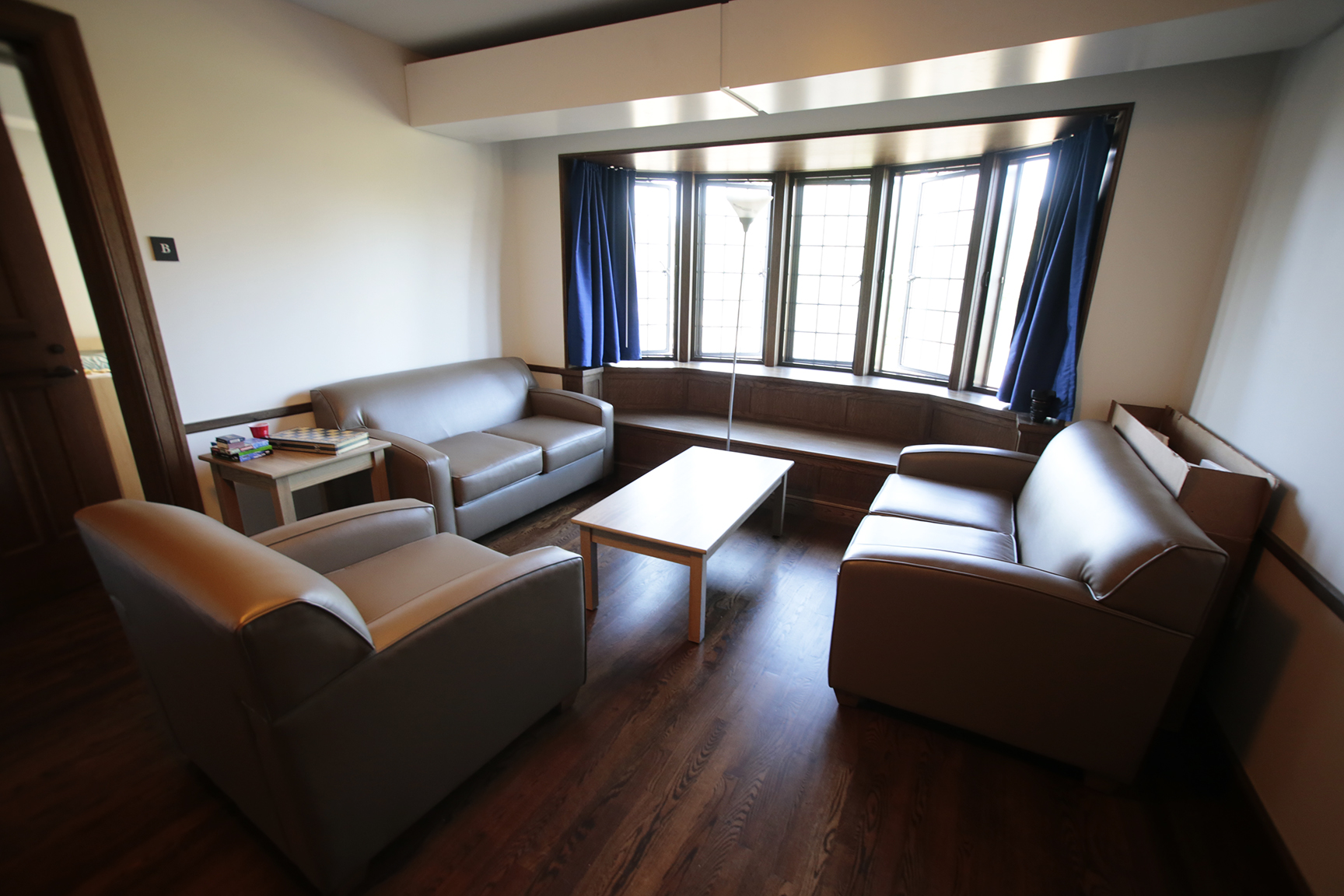
In keeping with the goals outlined in the Yale Sustainability Plan 2025, the 300 sets of lounge furniture and 904 bedroom furniture sets that decorate Pauli Murray and Benjamin Franklin colleges are made with a wood finish that makes them more environmentally friendly than furniture in the other 12 residential colleges.
In most wood finishing processes, the lacquer includes a high proportion of chemicals that release volatile organic compounds, known as VOCs, in the form of vapors or gases as the finish dries. The release of such compounds made the furniture finishing industry one of the greatest contributors to air pollution. By contrast, the finishing used by New England Woodcraft, which produced the furniture in the new colleges, is treated with UV light and thus emits almost no VOCs.
“[This] goes back to the Clean Air Act,” said Nelson Sweeney, the New England Woodcraft sales representative for Connecticut. “Furniture finishing, decades ago, was once the big polluter.”
In the early stages of research and development on new wood finishing methods, much of its importance to the company was in the reduction of worker exposure to toxins in the finishing facilities. While air quality inside manufacturing facilities remains an ongoing concern, New England Woodcraft’s discoveries of methods less damaging to the environment was acknowledged in a recent EPA case study.
Despite the new furniture in Franklin and Murray, there are no signs of any immediate plans for the University to apply these new policies to the older residential colleges, especially given that Yale concluded its most recent round of college renovations in 2011. Should any future plans arise, New England Woodcraft would be able to complete orders in a relatively timely manner, with Sweeney estimating that an order the size of that for Murray and Franklin would take approximately 120 days to complete. The Yale Office of Sustainability did not respond to inquiries about the cost of the new furniture.
In accordance with the University Design Standards, new constructions and major renovations must, at minimum, meet the standards of LEED gold certification, an independent certification process for buildings in which buildings and projects can amass points by meeting certain standards.
LEED gold is the second-highest level of certification. In order to gain the certification, the University evaluated furniture purchased for the new residential colleges on several considerations, including VOC content, ratings by the Forest Stewardship Council, wood sourcing location and associated carbon footprint.
“New England Woodcraft provided a local manufacturer that did not emit any or as many VOCs as other vendors while still having sustainable wood,” said Ginger Chapman, director of the Yale Office of Sustainability.
Yale’s sustainability plans are still a work in progress, however. Although there are currently existing guidelines, Yale Procurement, the department in charge of purchasing campus materials, will soon pilot a new set of criteria for all purchases and vendor relations. In addition, a goal that the University added to the Yale Sustainability Plan 2025 is to evaluate existing frameworks for high-performance building design and update Yale’s design requirements for emissions reductions and better health and ecosystem outcomes by 2019.
Yale is not the first college or university to turn its attention to sustainability with respect to furniture and housing. New England Woodcraft claims to be a large supplier to college housing in the U.S., with a long list of major universities as clients.
One of the most high-profile projects in which the company has been involved in is the House Renewal Program at Harvard. In July 2012, the Harvard Faculty of Arts and Sciences and Harvard College announced plans to renew its 12 undergraduate houses, or residence halls, starting with partial renovations of Quincy and Leverett houses. The project is still ongoing and is projected to cost Harvard more than $1.4 billion. New England Woodcraft has been the supplier of bedroom furniture since the plan’s early stages.
“We should try to fix [up] everywhere,” said Chika Ogbejesi ’21. “It doesn’t have to be immediately, but a slow investment, making more and more changes, could be helpful for the environment.”
The new residential colleges were designed by Robert A. M. Stern Architects LLP.
Angela Xiao | angela.xiao@yale.edu







